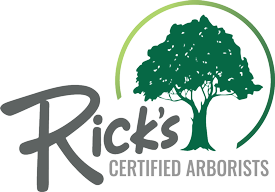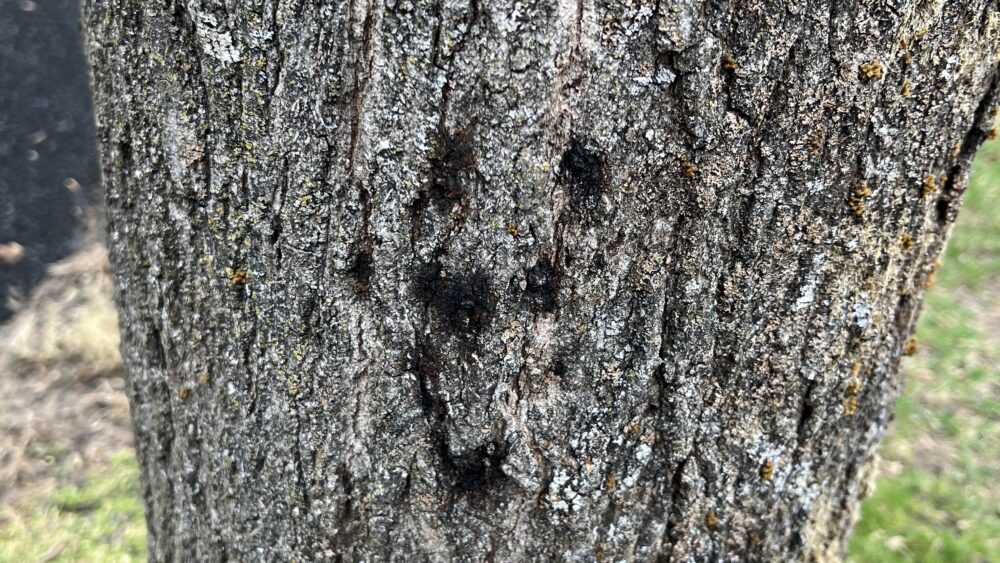If you have noticed that your trees “bleed” a sticky reddish fluid through their bark, you may be dealing with a case of Bleeding Canker. Bleeding Canker is a treatable disease that affects several kinds of landscape trees in Pennsylvania. Call Rick’s PHC Certified Arborists at 610-840-2655 to make an appointment for a consultation.
What is Bleeding Canker?
A fungus-like microbial species called Phytophthora causes most cases of Bleeding Cankers. This microbe infects tree bark and causes cankers which can appear year-round. It kills the inner sapwood and clears the way for future fungal infections and wood rot.
Pennsylvania tree species most vulnerable to Bleeding Canker include the European Beech, American Beech, Maple, Oak, Dogwood, Birch, Walnut, and Horse Chestnut. Apple, Willow, and Elm may be vulnerable as well.
Symptoms
Bleeding Canker usually makes itself apparent, but it is a good idea to check all your trees for this disease. The following symptoms could indicate a Bleeding Canker infection:
- Slits or holes (cankers) on bark oozing dark sap
- The bark itself appears stained and water-soaked
- Inner sapwood shows odd colors like brown, blue-green, pink, and orange
- Small foliage
- Fall colors appear too early
- Stunted growth
Not all bleeding cankers are a sign of Phytophthora disease. Other bacterial, fungal, and insect vectors can cause similar symptoms. For this reason, lab diagnosis is a must before treatment begins.
Treatment
While many landscape tree diseases are difficult to treat, Bleeding Canker has a simpler solution. Phosphite medications are effective against Bleeding Cankers. These medications should drench the bark but not touch the leaves.
Prevention
Phytophthora Bleeding Canker comes from the soil. Wet soils create the ideal environment for these microbes to grow. Ponding around the base of a tree, caused by soil compaction, can worsen conditions. Rainwater promotes the spread of the microbe from the soil to the bark, where it enters cracks and infects the tree. Avoid using a string trimmer or mower nearby. These can damage the bark and make infection more likely.
To help prevent Bleeding Canker, keep the areas around your trees as well-drained as possible, avoiding soil compaction.
Are You a Good Candidate for Bleeding Canker Treatment?
If you have noticed that your trees have cankers or dark-colored sap from the bark, you should have them assessed for Bleeding Cankers. Many types of this disease, including Phytophthora Bleeding Canker, are treatable with the right diagnosis and medication.
Why Choose Rick’s PHC Certified Arborists?
We are experts on diseases and conditions affecting landscape trees in our region. Our Certified Arborists have broad experience treating tree disease and promoting healthy growth. We can effectively treat your trees and restore your landscape to its full beauty. We can also help you with recommendations for actions that protect your existing trees from harm.
Frequently Asked Questions About Bleeding Canker
Here are several common client questions about Bleeding Canker:
Why is Bleeding Canker dangerous?
Bleeding Canker is a dangerous infection because it weakens trees, allowing pathogens and insects to enter. The tree will not be able to support its nutrition needs due to leaf loss, and branches may die back.
Does the infection threaten the tree’s life?
If this infection progresses too far, it could kill the tree due to cutting off its water and food supply. Secondary infections and insect infestations also contribute to tree death.
What types of medication do arborists recommend for Bleeding Cankers?
Phosphite preparations like Phostrol, Agri-Fos, and Reliant have been effective against Phytophthora Bleeding Canker. Other fungicides and antibiotics come into play when other organisms cause the disease.
Why should I keep power equipment away from my trees?
The microbe that causes Bleeding Cankers lives in the soil and can easily get into the tree through these injuries. Small bark cuts at the soil line could provide convenient entry points for bacteria, fungi, and insects. Trimming grass and weeds around your trees by hand is best to avoid unnecessary mechanical injuries. Protect your trees from vandalism as well.
Call Rick’s PHC Certified Arborists
Bleeding Canker may be a serious condition for your trees, but it is treatable. Call Rick’s PHC Certified Arborists at 610-840-2655 for expert diagnosis and treatment of your trees. Don’t hesitate to contact us if your trees have symptoms you can’t explain or if you have any questions about the exact cause of your tree issues.


Comments are closed.